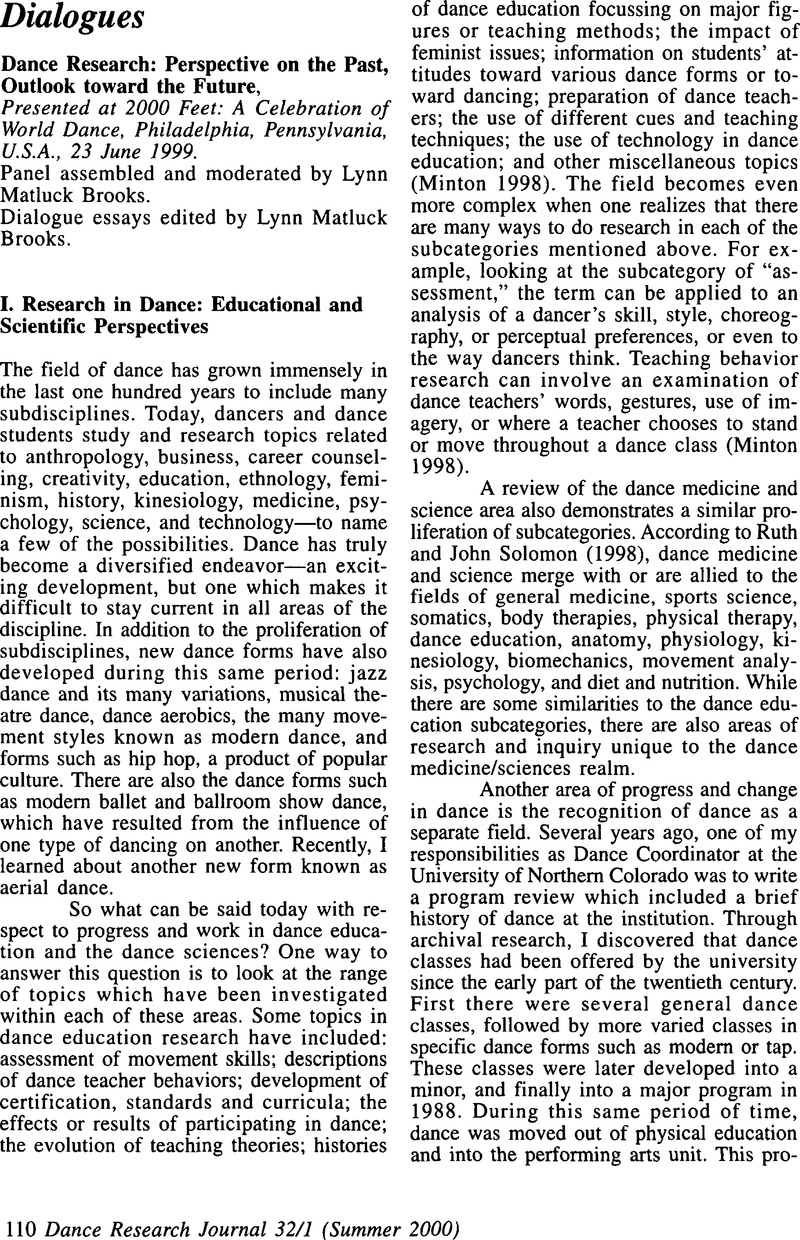Crossref Citations
This article has been cited by the following publications. This list is generated based on data provided by Crossref.
Weber, Rebecca
2009.
Integrating semi-structured somatic practices and contemporary dance technique training.
Journal of Dance & Somatic Practices
,
Vol. 1,
Issue. 2,
p.
237.
Cordella, Marisa
and
Poiani, Aldo
2014.
Behavioural Oncology.
p.
551.
Fotaki, Aspasia
Triantafyllou, Athanasios
Papagiannis, Georgios
Stasi, Sophia
Georgios, Papathanasiou
Olga, Savvidou
Tsolakis, Charilaos K.
and
Koulouvaris, Panayiotis
2021.
The science of biomechanics can promote dancers’ injury prevention strategies.
Physical Therapy Reviews,
Vol. 26,
Issue. 2,
p.
94.
Weber, Rebecca
and
Reed, Sara
2022.
Pedagogical Perspectives on Developing Creativity in Dance Students.
Journal of Dance Education,
Vol. 22,
Issue. 2,
p.
119.





